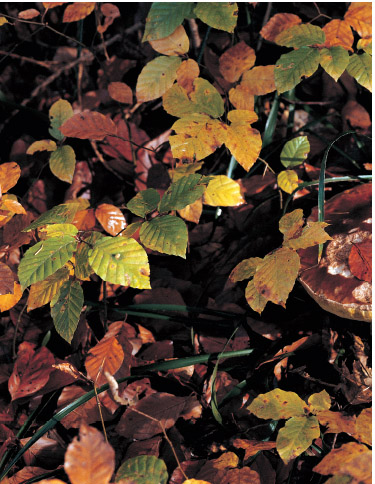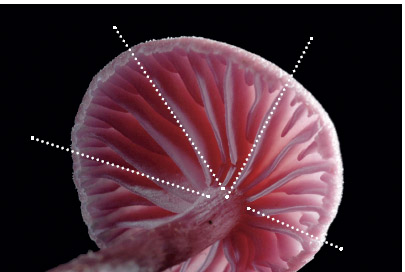
Gills, ridges, tubes, and spines provide four neat and useful divisions for identification purposes. Most mushrooms fall into one of these four categories. This is the reason why the first step in the identification process is to determine whether you are dealing with gills, tubes, spines, or ridges. As the following pages show, this is much easier than it sounds.
Gills are the radiating blades on the underside of the cap. They fan out in a distinctly regular way. Gills have precise forms and come in many colors. Some of them are brittle, some of them are soft.
They can be rubbed off or separated from the underside of the cap quite easily. Gills are always attached to the stem or the cap in a uniform way.

In perfect conditions, the distinctly regular way in which the gills fan out is clearly visible.
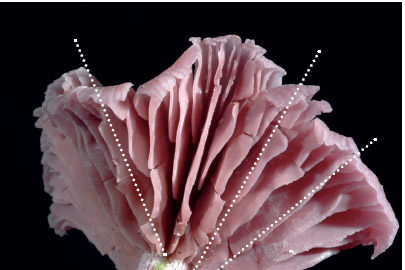
Weather-beaten or old gills might be damaged or broken, but on closer inspection, their regularity will become apparent. Damage or no damage: They run in straight, not wavy, lines.
In their regular way, gills differ in spacing and formation. For example:
Gills can fork once or more.
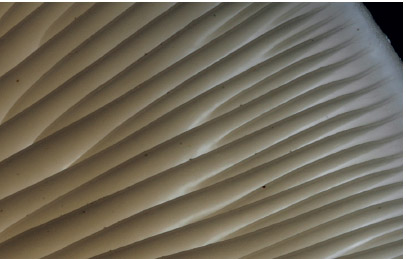
Gills can be mixed: long and short gills.
Gills can be crowded.
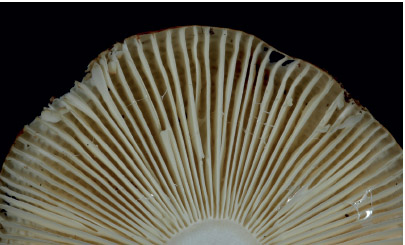
Gills can be widely spaced.
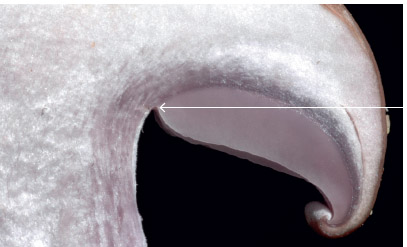
Gills are always uniformly attached to the cap or the stem. They start radiating from the same height along the stem or the same line around the cap.
Ridges are on the underside of the cap and form no regular pattern. They have no precise form. They can’t easily be rubbed off or separated from the cap or stem.
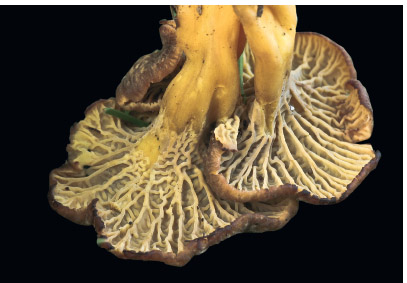
Ridges are on the underside of the cap. They are not just attached to the cap or stem: They’re part of them, which is why you can’t rub or pull them off easily.
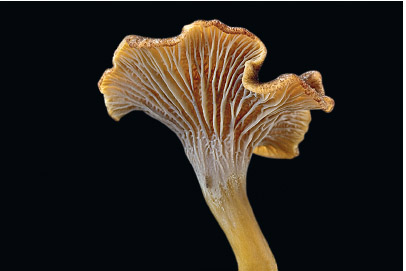
Ridges are cross-veined, irregular, and don’t form a set, uniform pattern. They are not attached to the stem in a distinct and regular way, as gills are: They are part of the stem.
The ridges are part of the stem. There is no distinct pattern in the way they grow out of the stem. Some ridges begin further up, some further down the stem. There is no regularity.
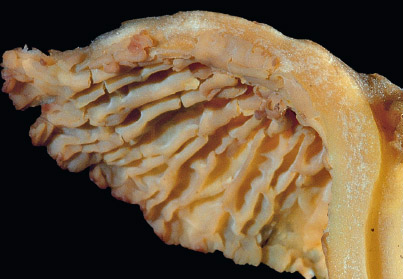
In contrast to gills and tubes, the section of a mushroom with ridges shows no typical features. Because of the irregular nature of ridges, each section will look different, whereas with tubes and gills, you will find the same features each time.
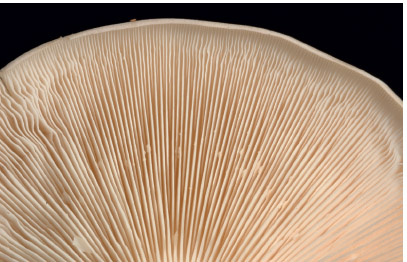
Regular, geometric.
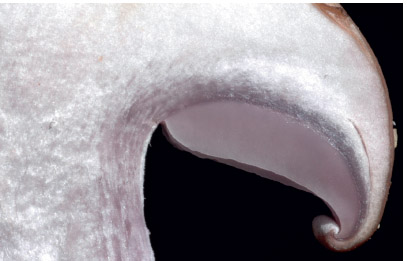
Attached to cap or stem.
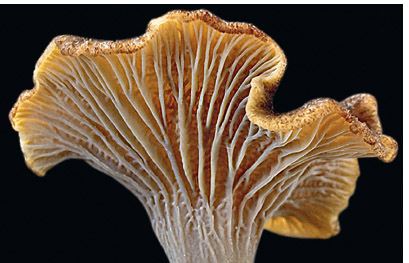
Irregular, cross-veined.
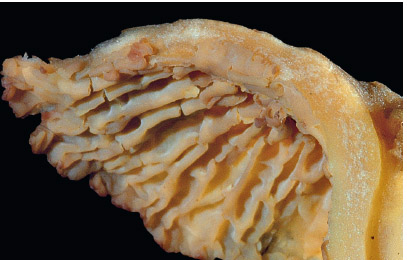
Part of cap and stem.
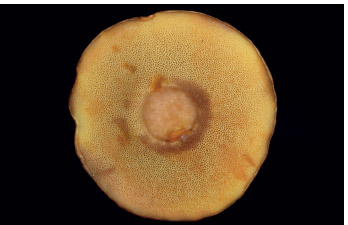
Tubes are fine and tightly packed on the underside of the cap. Without a cross-section, only the lower ends of the tubes are visible as little holes that are called pores. The pores have a sponge-like appearance, which is why the underside of mushrooms with tubes is often referred to as “spongy.” Some tubes are more tightly packed than others; in this case, the pores are smaller. Tubes can be removed from the cap easily.
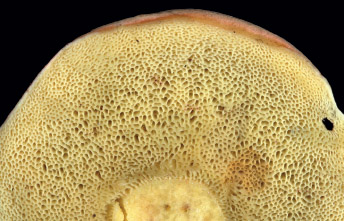
Pores form a regular pattern resembling a sponge.
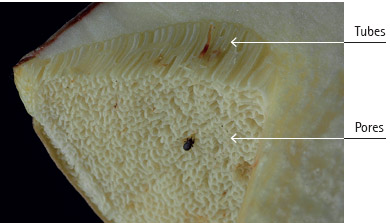
This cross-section shows the tubes and the pores.
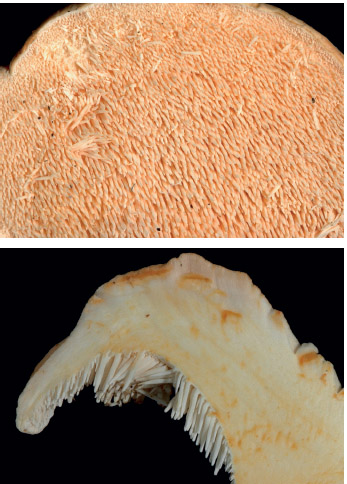
Spines hang like stalactites from the cap.
